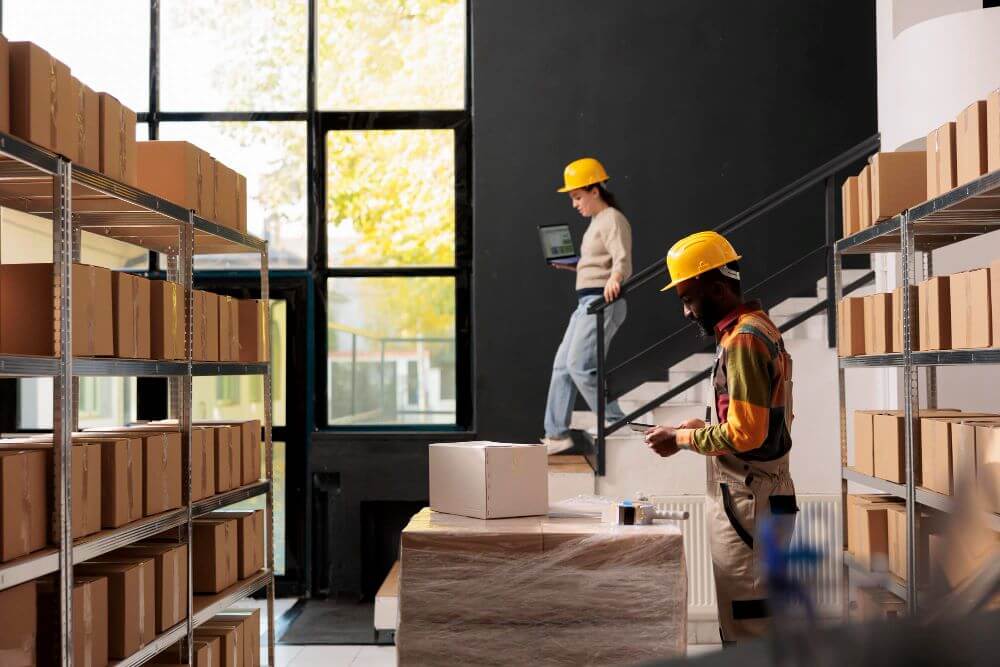For small and medium-sized businesses (SMBs), the journey from a great product idea to a customer’s doorstep is filled with operational hurdles. One of the most significant challenges is order fulfillment. Managing inventory, picking, packing, and shipping can quickly consume valuable time and resources, diverting focus from core activities like product development, marketing, and customer engagement. This is where a third-party logistics (3PL) provider becomes an invaluable partner, offering specialized expertise and infrastructure to streamline the entire fulfillment process.
The modern e-commerce landscape is fiercely competitive. Customer expectations are higher than ever, with demands for fast, reliable, and affordable shipping. A 2023 study found that 62% of online shoppers expect free shipping in 3-4 days. For an SMB handling logistics in-house, meeting these expectations is a tall order. The costs associated with warehouse space, staffing, and shipping carrier negotiations can be prohibitive. Partnering with a 3PL fulfillment provider levels the playing field, giving smaller businesses access to enterprise-level logistics capabilities without the hefty upfront investment.
These partnerships empower SMBs to scale operations efficiently. As order volumes grow, a 3PL can seamlessly absorb the increase, preventing the operational bottlenecks that often stifle growth. By outsourcing the complexities of warehousing and shipping, business owners can reclaim their time and energy, focusing on strategic initiatives that drive long-term success. The right fulfillment partner acts as an extension of the business, ensuring the final, crucial step of the customer journey is executed flawlessly.
The Core Functions of a 3PL Fulfillment Partner
When a business partners with a 3PL, it’s outsourcing a critical segment of its supply chain. The provider takes over the physical management of inventory and the entire order fulfillment workflow. This process begins the moment a customer clicks “buy” and ends when the package is safely delivered. A competent 3PL like InSync Fulfillment handles every step with precision and efficiency.
First is inventory receiving and storage. The 3PL receives incoming inventory from the manufacturer or supplier, inspects it for accuracy and damage, and securely stores it in their warehouse. Advanced warehouse management systems (WMS) are used to track every item, providing the business with real-time visibility into stock levels. This data is crucial for preventing stockouts and managing inventory turnover effectively. For example, a business like InSync Fulfillment integrates its WMS directly with a client’s e-commerce platform, ensuring stock counts are always accurate across all sales channels.
Next comes the order processing and picking. When a customer places an order, it is automatically transmitted to the 3PL’s system. Warehouse staff are then directed to “pick” the correct items from their storage locations. Efficiency here is key to enabling fast shipping. 3PLs often use sophisticated strategies like batch picking or zone picking to fulfill multiple orders simultaneously, drastically reducing the time from order placement to shipment. The accuracy of this stage is paramount; a mis-picked item leads directly to customer dissatisfaction and costly returns.
Finally, the items are packed and shipped. The 3PL selects appropriate packaging to protect the products during transit while minimizing dimensional weight to keep shipping costs down. Many providers offer custom packaging options, like branded boxes or inserts, to maintain a consistent brand experience. They then leverage their high-volume shipping contracts with carriers like UPS, FedEx, and USPS to secure discounted rates, passing those savings on to the SMB. The provider manages all shipping documentation and provides tracking information that is passed back to the customer.
Key Advantages for Small and Medium Businesses
The decision to outsource fulfillment is a strategic one that offers a multitude of benefits for growing businesses. These advantages go far beyond simply offloading tasks; they contribute directly to improved profitability, customer satisfaction, and scalability.
One of the most significant benefits is cost reduction. Maintaining a dedicated warehouse involves substantial overhead, including rent, utilities, insurance, labor, and technology investments. A 3PL spreads these costs across multiple clients, creating economies of scale that an individual SMB could not achieve alone. Furthermore, 3PLs negotiate high-volume discounts with shipping carriers, offering rates that are significantly lower than what a small business could secure on its own. A report by Armstrong & Associates noted that companies using 3PL services report an average logistics cost reduction of 11%.
Another major advantage is the ability to scale operations flexibly. Business is rarely static; it has peaks and valleys. An in-house fulfillment operation must be staffed and equipped to handle peak demand, meaning resources are often underutilized during slower periods. A 3PL partner provides the flexibility to scale up or down as needed. During a holiday rush or a successful marketing campaign, the 3PL can allocate more resources to handle the surge in orders. In slower months, the business is not burdened with the costs of idle warehouse space or staff. This elasticity is fundamental for sustainable growth.
Partnering with a 3PL also enhances the customer experience. With strategically located warehouses, a 3PL can store inventory closer to a business’s customer base, reducing transit times and shipping costs. This distributed inventory model makes two-day shipping a feasible and affordable option. Fast, reliable delivery is a cornerstone of customer loyalty. When orders arrive on time and in perfect condition, it reinforces the customer’s decision to purchase and encourages repeat business. An expert provider like InSync Fulfillment can help a business strategically place inventory across the country to optimize delivery speeds.
Selecting the Right 3PL Provider
Choosing a fulfillment partner is a critical decision that will have a long-term impact on a business. Not all 3PLs are created equal, and finding the right fit requires careful evaluation of a provider’s capabilities, technology, and service quality.
The first step is to assess your own business needs. Consider your average order volume, the physical characteristics of your products (size, weight, special handling requirements), and your primary customer locations. This information will help you identify providers that have experience with businesses similar to yours. Key factors to evaluate in a potential partner include:
- Technology Integration: The 3PL’s software must integrate seamlessly with your e-commerce platform (e.g., Shopify, BigCommerce, Magento). This ensures that orders flow automatically and inventory levels are synchronized in real-time, preventing overselling.
- Warehouse Network: Evaluate the location of the provider’s fulfillment centers. A 3PL with multiple warehouses allows for a distributed inventory strategy, which is essential for reducing shipping times and costs for a national customer base.
- Pricing Structure: Understand the 3PL’s fee structure completely. This typically includes costs for receiving inventory, storage (per pallet or bin), pick and pack (per order or per item), and shipping. Look for transparent pricing without hidden fees.
- Service Level Agreements (SLAs): A reputable 3PL will have clear SLAs that define their commitments for order turnaround time, picking accuracy, and inventory accuracy. These agreements provide a measurable standard for their performance.
Beyond these technical aspects, it is important to find a partner that aligns with your brand values and offers excellent support. Check references and read reviews from other clients. A good 3PL should feel like a true partner invested in your success, offering responsive customer service and proactive solutions. A partner like InSync Fulfillment works to understand each client’s unique needs to build a tailored logistics solution. The goal is to find a provider that can not only meet your current needs but also grow with you.
End Note
Transitioning from in-house fulfillment to a 3PL partnership is a significant milestone for any small or medium-sized business. It represents a strategic shift from managing day-to-day operational tasks to focusing on high-level growth initiatives. By leveraging the expertise, technology, and infrastructure of a specialized provider, SMBs can offer a customer experience that rivals that of major corporations. The ability to provide fast, reliable, and cost-effective shipping is no longer a luxury but a necessity in the competitive e-commerce market.
The benefits—cost savings through economies of scale, operational flexibility to handle fluctuating demand, and improved customer satisfaction through faster delivery—are compelling. Finding the right partner, one that offers robust technology and transparent service, is the key to unlocking these advantages. For many growing businesses, partnering with a logistics expert like InSync Fulfillment is the catalyst that enables them to break through operational ceilings and achieve new levels of scale and profitability. Ultimately, outsourcing fulfillment allows entrepreneurs to get back to what they do best: building their brand and creating great products.






